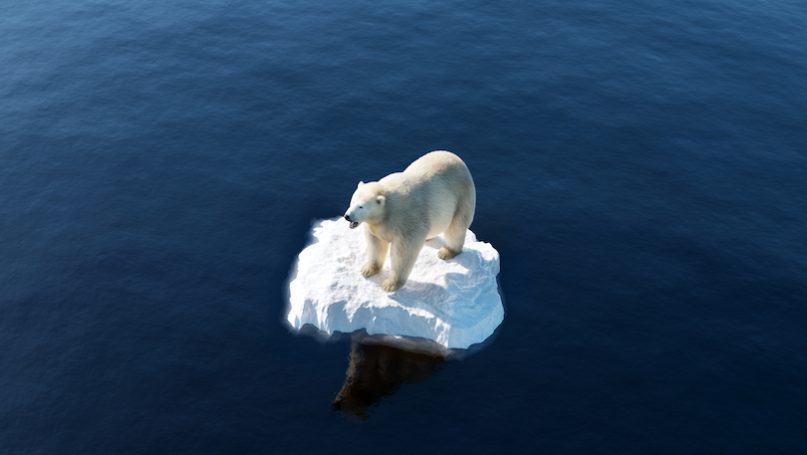
This is an excerpt from Global Climate Justice: Theory and Practice. You can download the book free of charge from E-International Relations.
Global Climate Justice: Theory and Practice has two main purposes, dictated by the historical (and climatic) moment we are living. On the one hand, the book aims to propose a series of reflections on the distributive aspects of global climate justice, in its three components mentioned above, for the post-COP26 period. The hope that has been pinned on COP26 (Glasgow 2021) was to keep the 1.5°C mitigation target alive. To understand whether this has been achieved, it will be necessary to see whether the decarbonisation commitments and announcements are translated into concrete action. What is important to emphasise, however, is that we are going through a crucial phase in the history of humankind, in which we must decide whether we will take the earth beyond irreversible climate risk thresholds or stop short of the cliff. Global CO2 emissions have been on a steeply rising curve since 1950, increasing from just over 5 Gt per year to over 36 Gt in the immediate pre-Covid-19 period (Ritchie and Roser 2020). Effective climate mitigation requires this curve to take the shape of a bell between now and the next 30 years. We are now at the top of this hypothetical bell. We need ethical and political theories to guide us on the way down.
The second objective of the book is to trigger a series of parallel and complementary normative reflections on the climate neutrality ambition. Decarbonising the world’s economy, and doing so in a just way, requires a series of significant social and political interventions. Perhaps the most obvious case concerns food and agriculture. Current styles of food consumption are simply incompatible with medium- and long-term climate mitigation goals. It is therefore essential to rethink both the production and consumption of many foods, red meat being one example. Obviously, this could have major social consequences, as well as encountering the obvious implementation hurdles that arise when people are called upon to change deep-rooted habits (see Murdock and Noll 215).
Another key issue is gender. Women are often the most vulnerable to climate damage, especially in developing countries, both because they are usually in charge of providing food and water for their families, which climate change puts at risk, and because they have fewer socio-economic means to adapt to climate shocks. But they are also potential climate mitigation actors, especially in those social contexts where they play a key decision-making role in household energy choices. It is therefore clear that climate policies, be they aimed at mitigation, adaptation or compensation, need to be made gender-sensitive for them to be fair and effective (see Jafry 2016; Perkins 2019).
Another major challenge is the social responsibility of companies with respect to the goal of net zero emissions by 2050, especially companies that have contributed and still contribute the most to GHG emissions. On the one hand, companies are called upon to rethink their productive activities in order to limit their environmental footprint without negatively impacting their stakeholders (primarily their workers), and on the other hand, they have to account for the climate damage they have caused so far and from which they have gained considerable profits (Benjamin 2021, 20–45; Grasso 2022). Alongside the moral responsibility of polluters there arises the normative problem of stranded assets. To achieve climate neutrality by 2050, humanity will need to keep about 60% of gas and oil and 90% of coal underground (Welsby et al. 2021). This will mean, for those who control access to these energy assets, giving up conspicuous profits and liquidating the relevant infrastructure earlier than planned when it was built. The losers will not only be the companies but also the savers who have (more or less wittingly) invested in these companies and, of course, the workers. This raises both the issue of protecting the most vulnerable and whether and under what circumstances the winners of the climate transition owe something to the losers (see Caldecott et al. 2021). Finally, national and international legal systems are faced with a pressing challenge, i.e., to account for the rights of future individuals, who are the main victims of climate change, and also to reconceptualise the rights of non- human living beings vis-à-vis an existential threat such as climate change (see González-Ricoy and Gosseries 2016; Di Paola and Jamieson 2018).
We consider it useful to try to pursue both objectives in the same volume, despite the limited number of pages available, because the distributive challenge of climate justice inevitably intersects with a series of ethical, political and legal issues concerning the role of consumers, companies, policymakers and technology in the global undertaking towards long-term sustainability and carbon neutrality. At the same time, part of the upshot of the transition to a fossil-fuel free society depends on how the different components of climate distributive justice, in particular the aspects of effectiveness and equity, are combined.
Further Reading on E-International Relations
- Thinking Global Podcast – Genevieve Guenther
- Call for Contributors – Climate Change and Global Distributive Justice
- New Book – Global Politics in a Post-Truth Age
- Open Access Book – Realism in Practice: An Appraisal
- Open Access Book – Meditations on Diplomacy: Comparative Cases in Diplomatic Practice and Foreign Policy
- Thinking Global Podcast – The Laid-Back Book Club (Ep.3)